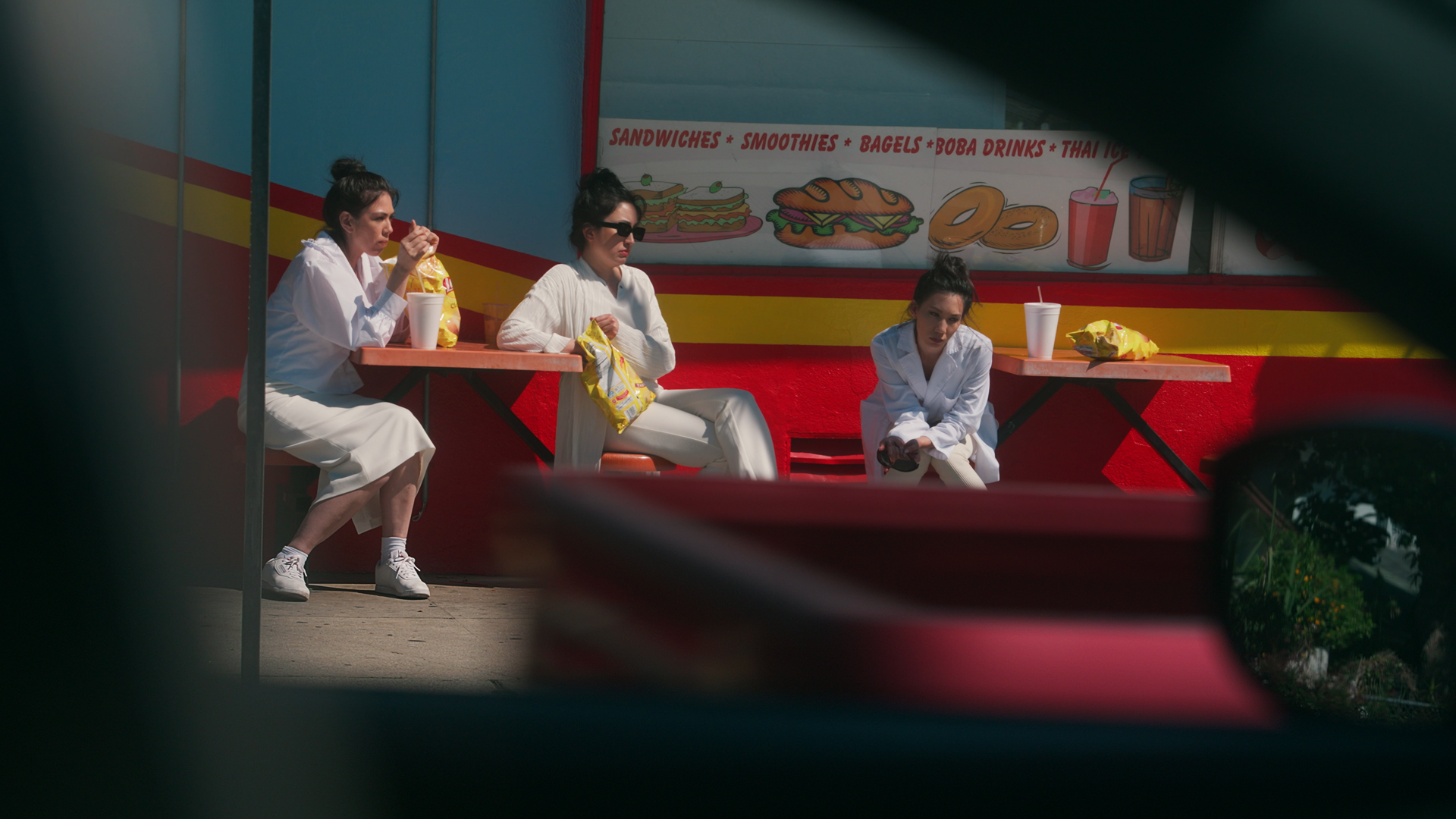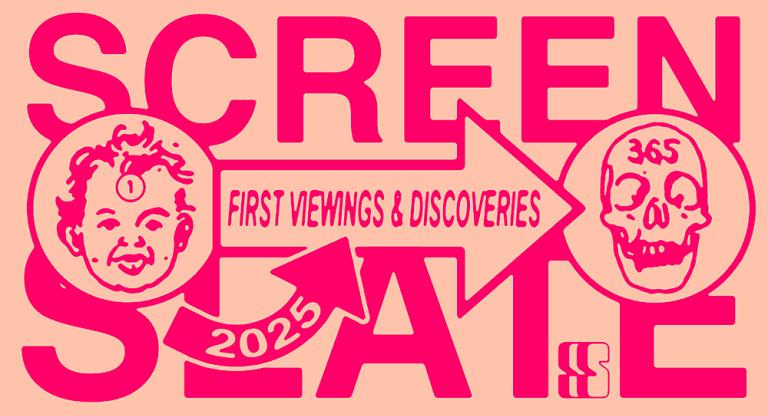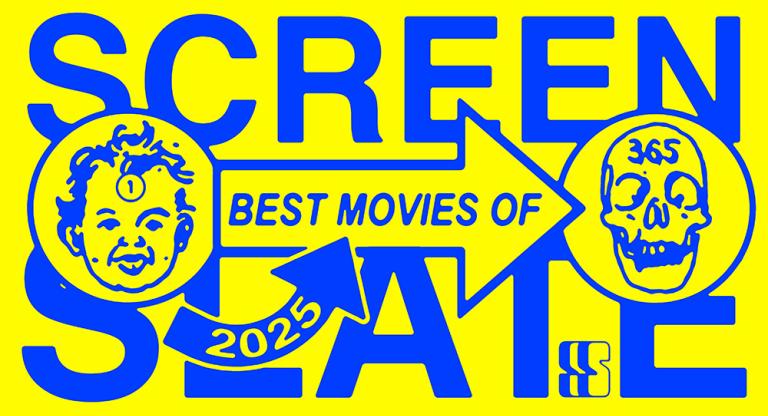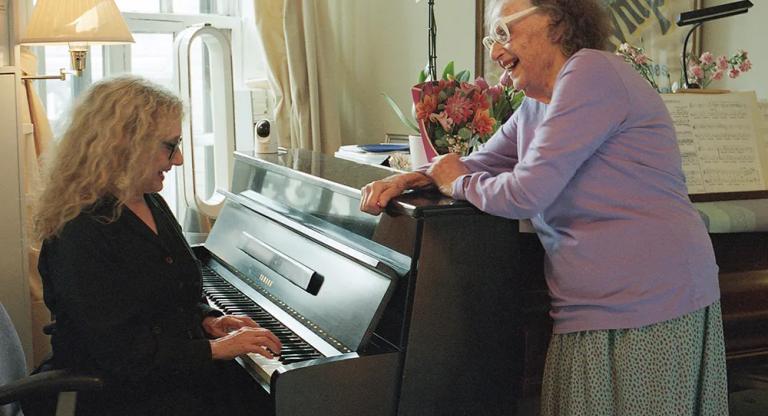A vehicle with a trajectory, as in any road movie: a white limousine angling its way through the desert into Hollywood. Three women in stark white outfits sit in the back, their arms touching. They could be sisters, or perhaps coworkers. The presence of a driver remains nebulous throughout, as does that of an offscreen guide who continually addresses the women in tech-leader jargon, extolling the benefits of networks and compasses. Sunlight refracts through the long tinted windows, blending with the blue LED strips within.
Glassy surfaces, warped mirrors, and facsimile images abound in Alison Nguyen’s film history as hypnosis (2023), which has itself appeared previously in different valences. Earlier this year, it manifested as two separate three-channel installations: one at Nguyen’s solo show at MIT List Center, the other as part of Columbia University’s Visual Arts MFA Thesis exhibition. Tonight’s premiere of the single-screen cinema version adds another facet to the work, and to its beveled confrontation of desires reflected in American movie genres: the noir, the road journey, and the sci-fi tale of aliens.
There is a comic aspect to watching the enormous limousine, itself an outdated status symbol, bumbling over rocky paths, or pulling into a strip-mall parking lot. The limo’s route remains staunch despite its illogicality, while the energy between the protagonists crackles. As the women stop at various stores, they are met with instinctive aggression from other workers. A hairdresser spots them outside his window and aims a red blow-dryer at them, as if to shoot. Next, all of them are seated together at a restaurant, the women chortling at his joke. In these spectrally choreographed moments, human dynamics seem to lilt along a slanted plane, where laughter meets historical tragedies.
Architecture looms in the film, shot between Southern California and New York City. Stilted, handheld footage out the limousine’s windows juxtaposes the novelty gimmicks of entrepreneurs—a KFC store in the shape of its signature chicken bucket—with the similarly promotional, though deceptively less self-referential, structures of big tech. The film incorporates an encounter with a policeman outside Google’s real-life office in Venice, California, dubbed the “Binoculars Building” for the giant, matte-black sculpture out front. But it is Columbia University’s new Harlem campus that Nguyen adapts as the film’s AI company headquarters. Spitting morphed images of their environs back outward via their cool-glass shells, it is as if the campus’s Forum Building and Business School exist in class-antagonism with the “outer world”—not unlike the way city reflections stream across the dark windows of creeping limousines. The monied armors of both building and car present a sardonic cinema of the increasingly apocalyptic, poverty-ridden streets of America’s large cities.
The live-action sequences are severed throughout by bright slides of text, spouting glitchy animations of a riotous poem by the artist’s brother, Matthew Nguyen. The poem’s narrator grapples with the memory of being herded to the Smithsonian National Air and Space Museum—a warehouse of American weapons, including those used to commit atrocious violence in Vietnam—by a seemingly deranged, immigrant uncle, who finds tremendous glee in purchasing a used limousine as his everyday car. Duplicated sections from the poem burst across the screen at junctures in the film’s storyline, as if functions of programming gone awry.
In November, Nguyen led a workshop at Wendy’s Subway, where she spoke on her affinity for iterations and disseminating work across various contexts. Nguyen advocates the creative freedoms an artist can locate by making editions in a patriarchal and novelty-driven market—a theme she has explored in works featuring the digitally animated Andra8, a “freemium” avatar and stand-in for Nguyen as artist. With history as hypnosis, Nguyen foregrounds the critical openings and solidarities that can be fashioned between multiples, look-alikes, and echoes in diaspora. This against the militarized agendas of corporate algorithms, which seek to enforce racial and class inequities while managing away possibilities of difference beyond the visual: laughter, swaying, flickers.
history as hypnosis screens tonight, December 4, at the Museum of Modern Art as part of “An Evening with Alison Nguyen,” alongside my favorite software is being here (2020–21) and every dog has its day (2019), followed by a conversation with the artist.



